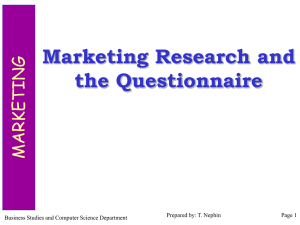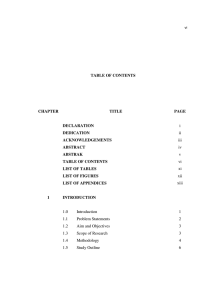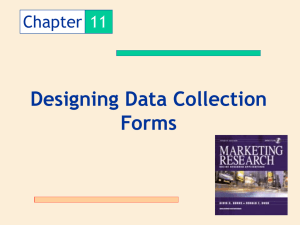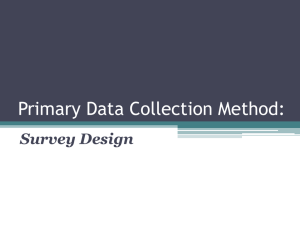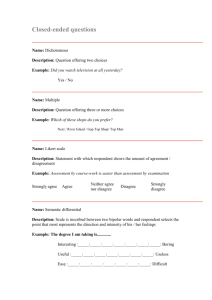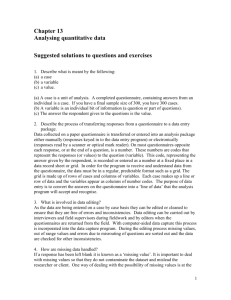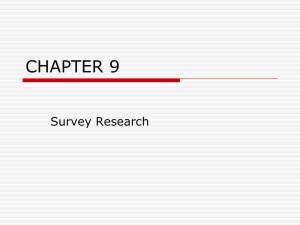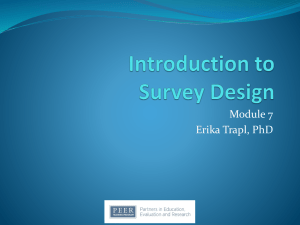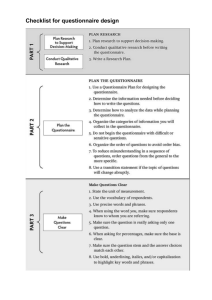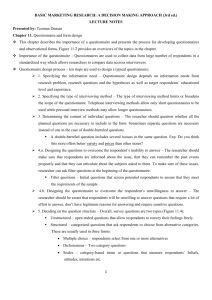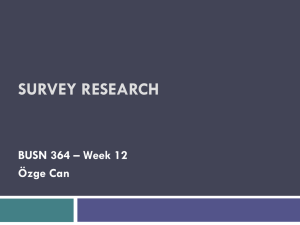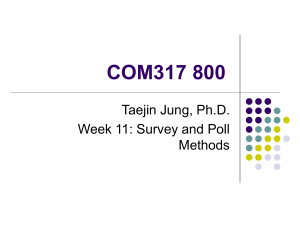order
advertisement
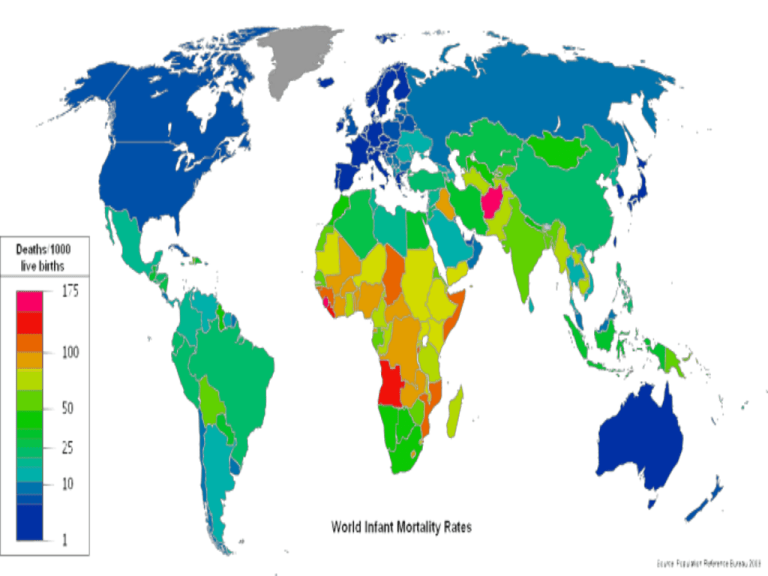
Discussion What is development? Why are some people poor? How to develop? 2 Debate Human rights or sovereignty? • One chair • Two teams with four main debaters per team • Participation of the audience is encouraged 3 Questionnaire Design Learning Objectives Concept of questionnaire Purpose of questionnaire Process of designing questionnaire 5 Concept of Questionnaire Formalized set of questions Obtain information from respondents • Schedule • Interview form • Measuring instrument 6 Purpose of Questionnaire Translate information needed into questions Motivate respondent to cooperate Minimize response error 7 Questionnaire Design Process Specify information needed Specify type of interviewing method Determine content of individual questions Design question to overcome inability and unwillingness to answer Decide on question structure 8 Questionnaire Design Process Determine question wording Arrange questions in proper order Identify form and layout Reproduce questionnaire Eliminate bugs by pretesting 9 Type of Interviewing Method Personal interview Telephone interview Mail interview 10 Individual Question Content Is the question necessary? Are several questions needed instead of one? • Double-barrelled question Do you think Coca-Cola is a tasty and refreshing soft drink? Do you think Coca-Cola is a tasty soft drink? Do you think Coca-Cola is a refreshing soft drink? 11 Overcoming Inability to Answer Is the respondent informed? • Filter questions Can the respondent remember? Can the respondent articulate? 12 Errors Resulted from Inability to Remember Omission Telescoping Creation 13 Overcoming Unwillingness to Answer Effort required of respondents Context Legitimate purpose Sensitive information 14 Legitimate Purpose Why should a firm marketing cereals want to know their age, income, and occupation? Explain why the data are needed • To determine how the consumption of cereal and preferences for cereal brands vary among people of different ages, incomes and occupations, we need information on … 15 Increasing Willingness of Respondents Place sensitive topics at the end Preface question with statement that the behaviour of interest is common Ask question using third-person technique Hide question in other questions Provide response categories Use randomized techniques 16 Use Randomized Techniques Present respondents two questions Ask them to select one question randomly Respondents answer the selected question yes or no 17 Choosing Question Structure Unstructured questions • What is your occupation? Structured questions • Multiple-choice questions • Dichotomous questions • Scales 18 Unstructured Questions Advantages • Enable respondents to express general attitudes and opinions • Have less biasing influence • Provide researcher with rich insights Disadvantages • Potential for interviewer bias is high • Coding of response is costly and timeconsuming 19 Multiple-choice Questions Alternatives should include the set of all possible choices Avoid order or position bias 20 Choosing Question Wording Do • Define issue • Use ordinary words • Use unambiguous words • Use positive and negative statements Avoid • Leading or biasing questions • Implicit alternatives • Implicit assumptions • Generalization and estimates 21 Avoid Leading or Biasing Questions Leading question clues respondent to what the answer should be • Do you think that patriotic Americans should buy imported automobiles when that would put American labour out of work? Yes No Don’t know 22 Avoid Implicit Alternatives Instead of this • Do you like to fly when travelling short distances? Use this • Do you like to fly when travelling short distances, or would you rather drive? 23 Avoid Implicit Assumptions Instead of this • Are you in favour of a balanced budget? Use this • Are you in favour of a balanced budget if it would result in an increase in the personal income tax? 24 Avoid Generalization and Estimates Instead of this • What is the annual per capita expenditure on groceries in your household? Use these • What is the monthly expenditure on groceries in your household? • How many members are there in your household? 25 Determining Order of Questions Opening questions Type of information Difficult questions Effect on subsequent questions Logical order 26 Opening Questions To begin with, I’d like to know, how much do you like living in this (town/city)? Would you say you like it a lot, a little, or not too much? • • • • A lot ____ A little ____ Not too much ____ Don’t know ____ 27 Type of Information Basic information Classification information Identification information 28 Effect on Subsequent Questions Funnel approach • What consideration are important to you in selecting a department store? • In selecting a department store, how important is convenience of location? 29 Q&A

